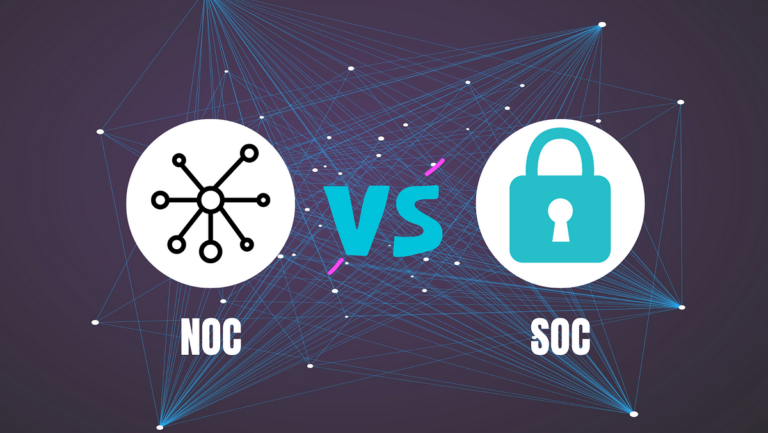In today’s digital landscape, artificial intelligence security has emerged as a game-changer for cybersecurity, providing robust solutions to combat evolving threats. AI-driven systems leverage advanced algorithms to analyze vast amounts of security logs, enabling anomaly detection, malware identification, and phishing detection with unprecedented accuracy.
AI’s role in artificial intelligence security spans numerous facets, from enhancing threat detection capabilities through machine learning models to automating security processes and optimizing security operations centers (SOCs). This technology is reshaping defensive strategies, integrating seamlessly with existing cybersecurity ecosystems to fortify protection and streamline incident response.
Emerging AI-Based Attack Vectors
Along with enhancing existing attack vectors, AI allows bad actors to create new methods that pose unprecedented risks to organizations. Two emerging threats are sophisticated phishing and AI malware development.
Sophisticated Phishing
Generative AI tools like ChatGPT can simulate human-like responses, tricking people into divulging sensitive information or clicking malicious links. Cybercriminals leverage personal data from social media or breaches to craft emails appearing from trusted sources. AI can insert this data and rapidly generate convincing phishing emails at scale, improving accuracy and speed. Large language models can also incorporate real-time details, increasing believability and urgency.
AI Malware Development
AI aids cybercriminals in developing advanced malware that evades detection. For instance, BlackMamba uses a large language model to create a polymorphic keylogger that mutates with each run, slipping past predictive security software. Such continuously mutating AI malware is difficult to combat permanently. Attackers can deliver this malware through seemingly innocuous software executables.
AI-Enhanced Defensive Strategies
AI-powered defensive strategies are revolutionizing cybersecurity by providing proactive threat identification and advanced security analytics. These cutting-edge approaches empower organizations to stay ahead of evolving cyber threats.
Proactive Threat Identification
AI excels in analyzing vast amounts of data in real-time, identifying patterns that may indicate potential threats. Through machine learning algorithms, AI systems continuously learn and adapt their detection capabilities to emerging threats. This enables you to detect anomalies and zero-day attacks that traditional signature-based methods might miss.
Moreover, AI’s predictive analytics capabilities allow for proactive threat hunting. By utilizing advanced algorithms and cognitive computing, AI can predict potential vulnerabilities based on historical attack patterns and user behavior analysis. This allows your IT teams to prioritize resources effectively and allocate them strategically.
Advanced Security Analytics
AI enhances threat detection by rapidly processing large volumes of data simultaneously across multiple sources like logs, endpoints, and network traffic. Unlike human analysts with limitations, AI can swiftly sift through massive datasets, identifying even subtle indicators that may go unnoticed.
AI augments Security Information and Event Management (SIEM) systems by correlating and analyzing security data, providing actionable insights and reducing false positives. Additionally, AI enables predictive analytics, allowing you to anticipate and prepare for potential cyber threats proactively, enhancing your overall security posture.
AI for SOC Optimization
AI and ML-driven automation actively transforms SOC operations, enhancing efficiency and intelligence. This transformation occurs through:
Routine Task Automation
AI systems excel in automating routine tasks, significantly reducing the workload on security analysts. Security orchestration integrates various security tools and processes, streamlining operations. AI can process and analyze security data in real-time, enhancing the security services provided. By automating incident response, AI enables immediate action against detected threats, minimizing their impact. AI can also automate patching and system updates, ensuring security systems are up-to-date with the latest protections.
Enhanced Monitoring
AI has transformed monitoring from a manual task requiring constant human attention to one that’s proactive and automated. AI-driven video and audio analytics utilize advanced recognition technologies to detect unusual activities, improving situational awareness and reducing false alarms. AI excels in predictive analytics, providing early warnings to SOCs, enabling preemptive action against potential threats. AI simplifies access control complexities by integrating predictive analytics and advanced pattern recognition to detect and react swiftly to anomalous behaviors.
Integrative AI Solutions
Integrative AI solutions offer a holistic approach to cybersecurity by breaking down data silos and providing a unified security posture across your organization.
Breaking Down Data Silos
Data silos occur when different teams store and manage data separately, hindering collaboration and slowing incident response. You can break down these silos by understanding who has, uses, and needs your data across teams. Leaders can then consolidate disparate data sources into centralized locations, improving communication and cross-functional collaboration. Creating matrix-style teams with cross-pollination of skills directly combats silos from hierarchical structures.
Unified Security Posture
AI security posture management (AI-SPM) provides a comprehensive approach to maintaining the security and integrity of AI/ML systems. It enables continuous monitoring, assessment, and improvement of the security posture of AI models, data, and infrastructure. AI-SPM identifies vulnerabilities, misconfigurations, and potential risks associated with AI adoption, ensuring compliance with relevant regulations.
Unified security operations (SecOps) platforms powered by AI integrate prevention, detection, and response across hybrid environments. You can view and disrupt cyberthreats in near-real-time, boost productivity with automated workflows, and replace disconnected tools with a streamlined platform. AI-SPM and unified SecOps platforms deliver proactive cyberthreat protection and a holistic security posture.
AI’s Impact on Data Management
AI has revolutionized data management, enhancing security and efficiency. Two key areas where AI has made a significant impact are randomized data storage and infrastructure transformation.
Randomized Data Storage
AI enables randomized data storage, making it harder for attackers to locate and access sensitive information. By constantly shuffling and distributing data across multiple locations, AI obfuscates the data’s physical storage, creating an additional layer of security. This approach reduces the risk of data breaches by eliminating a single point of failure and making it more difficult for unauthorized entities to gain access to complete datasets.
Infrastructure Transformation
AI has transformed the way organizations manage their security infrastructure. AI-powered security solutions can dynamically adapt to changing threats and environments, ensuring optimal protection. These solutions continuously monitor and analyze network traffic, user behavior, and system logs to identify potential vulnerabilities or anomalies. When a threat is detected, AI can automatically initiate appropriate countermeasures, such as isolating compromised systems, blocking malicious traffic, or triggering incident response protocols.
Moreover, AI enables predictive maintenance, allowing organizations to proactively identify and address potential infrastructure issues before they escalate into security breaches or system failures. By analyzing historical data and real-time telemetry, AI can predict hardware or software failures, enabling timely maintenance and minimizing downtime.
Conclusion
The rapid advancement of artificial intelligence security is reshaping the cybersecurity landscape, offering both challenges and opportunities. While AI aids in the development of sophisticated attack vectors like AI-driven phishing and continuously mutating malware, it also empowers organizations with proactive threat identification, advanced security analytics, and streamlined security operations. The integration of AI solutions breaks down data silos, provides a unified security posture, and revolutionizes data management through randomized storage and infrastructure transformation.
As the adoption of AI continues to grow, it is crucial for organizations to stay vigilant and embrace these cutting-edge technologies to fortify their defenses against evolving cyber threats. Contact us to see how Exodata can help your business stay secure by leveraging the power of artificial intelligence security.
FAQs
- How does AI enhance cybersecurity measures? Artificial intelligence (AI) significantly boosts cybersecurity by efficiently and accurately analyzing vast amounts of data. AI algorithms are adept at quickly identifying patterns and anomalies in data, which helps cybersecurity professionals detect threats and unusual behaviors swiftly.
- Can you provide an example of how AI is utilized in cybersecurity? AI and machine learning are integral to modern cybersecurity tools such as antivirus and malware detection software. For instance, products like Malwarebytes and Kaspersky’s Endpoint Security leverage AI to effectively pinpoint malware, recognize harmful software behaviors, and adapt to new evasion techniques autonomously.
- What should be known about AI’s role in security? While AI is a potent asset in cybersecurity, it does not eliminate the need for human oversight and training. The most effective security strategies combine AI technology with thorough employee training and adherence to security best practices, substantially mitigating the risk of cyberattacks and safeguarding sensitive information.
- What are the five critical steps in cybersecurity? To enhance cybersecurity, the following five steps are crucial:
- Protect Your Data: Implement strong passwords and additional security measures.
- Prevent Malware: Use effective anti-malware tools and strategies.
- Avoid Phishing Attacks: Be vigilant about suspicious emails and links.
- Backup Your Data: Regularly save copies of important data.
- Keep Your Devices Safe: Ensure physical and digital security of all devices. For detailed information on these steps, refer to the downloadable documents available on our website.










